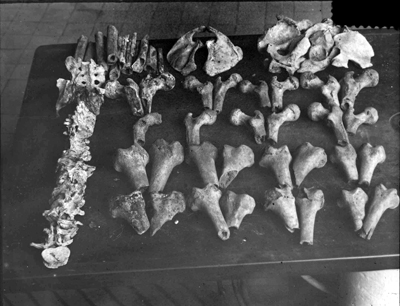
Food is the First Thing / Morals follow on // 2004-2009
A photograph from the collection of Prof. Dobosz. Prof. Dobosz showed the pictures for the first time at a forensic symposium in 2007.
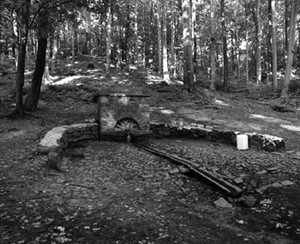
Food is the First Thing / Morals follow on // 2004-2009
Forest north of Ziębice.

Food is the First Thing / Morals follow on // 2004-2009
A forensic photograph from the collection of Prof. Dobosz.
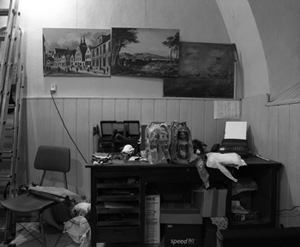
Food is the First Thing / Morals follow on // 2004-2009
The local museum's storage room. It used to be the cell of the police station. This is where Denke committed suicide. This room attracts more visits than the official exhibition space of the museum.
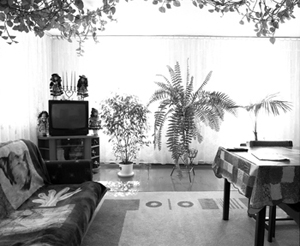
Food is the First Thing / Morals follow on // 2004-2009
Interior of the apartment occupied by Karl Denke until his death in 1924.
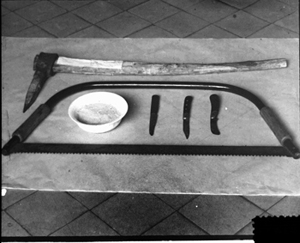
Food is the First Thing / Morals follow on // 2004-2009
One of roughly 1200 photographs found at a dumpsite at the Academy of Medicine in Wrocław in the 1980s by Prof. Tadeusz Dobosz.

Food is the First Thing / Morals follow on // 2004-2009
A forensic photograph from the collection of Prof. Dobosz.
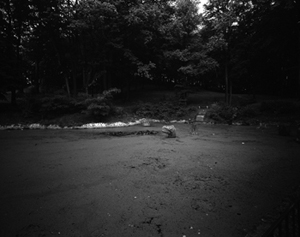
Food is the First Thing / Morals follow on // 2004-2009
Ziębice, Municipal Park.
Food is the First Thing / Morals follow on
2004-09, multi-media installation with photographs, text, video, blog.
The starting point for the project is a collection of 12 archival photographs and a forensic report published in 1926 in Breslau. As it turned out, both concern the same person: Karl Denke (1870-1924), a serial killer, who not only killed people, but also butchered them, sold their meat on the market, maybe cannibalized them and sold their clothes. He wasn’t a psychopath in medical terms, nor was he a sexual maniac. His deeds seem purely rational: killing people as a means of income in the time of financial crisis.
The story can be found in one form or another in various parts of Central Europe, and has given rise to urban legends, which have reflected in popular schlager songs, comic books, movies, short stories and novels. These secondary reflections from urban folklore to various forms of fiction, mass media and popular art are the topic of the blog – how does a sordid story like this find its way into popular culture, between mass entertainment and social criticism.
The 1920s saw more than this in terms of crime and cannibalism in Europe. Only in Germany between 1921 and 1924 two other mass murderers were caught and put on trial: Carl Grossmann (in Berlin) and Fritz Haarmann (in Hannover). Their biographies - both factual and mythicized - gave birth to multiple legends, urban stories, poems, songs, movies, novels and references. From Fritz Lang's M to Karmakar's Totmacher, from Brecht's Three-pennies Opera to Rammstein's Mein Teil and so on...
The project Food is the first Thing / Morals follow on is developed in two distinct directions: - first, it is an inquiry into the forming of a myth - from the factual stories of Denke, Grossmann and Haarmann to the legends, that emerged with time; - second, it is an attempt to consider the deeds of the murderers in the context of a ubiquitous and highly influential yet often overlooked concept of the 20th Century - that of eugenics - an idea that started as a will to reform the existing society, but soon became the intellectual basis for racism, anti-Semitism and other forms of misanthropy.
Grossmann, Haarmann and Denke killed only vagabonds, beggars, homeless, prostitutes - people judged unfit by the partisans of eugenics. Denke - a son of a farmer - butchered them as if they were nothing more than cattle. The neighbors never reacted, even though they knew that something strange is happening in Denke's apartment.
Is there a real link between Denke's, Haarmann's and Grossmann's crimes and the eugenic programs developed by most of European states along with USA, Australia, Canada and Japan in the first half of the 20th Century? Probably not. This is not my point. However, the parallels are there. The lifes unworthy of life - (to quote from the title of an influential book by K. Binding and A. Hoche published in 1920 Die Freigabe der Vernichtung Lebensunwerten Lebens) were meant to be eradicated. It was official. The process begun in Zürich in the 1890s at the Burghölzli clinic with the sterilization of the mentally retarded, then it was adopted by the American and European states as a means to improve societies. Virtually no country, that regarded itself as modern or at least developing was reluctant to eugenics in some extent.
Denke, Haarmann and Grossmann were not merely flashes of “light revealing the statesanctioned mass murderers that were to come” as has put Alfred Hrdlicka. They reflected the dangers of a patriarchal modernity with its rational scheme of creating a better world (for the “better peoples”).
Food is the first Thing / Morals follow on is a multimedia, multithreaded, nonlinear project developed simultaneously as an exhibition and a website (blog).
Krzysztof Miękus
* 1975 in Warsaw, lives and works in Gdansk, Poland.
Krzysztof Miękus is an independent artist, curator, journalist. Graduate from University of Warsaw, department of Philosophy, Studium Fotografii ZPAF (School of Photography of the Polish Association of Artists Photographers) and Szkoła Reportażu Collegium Civitas (School of Reportage of the Collegium Civitas).
Has been working on a complex multimedia art project entitled Mittel since 2008 – inspired by the modern mythology of Central Europe. The project is divided into smaller sections such as Food is the First Thing / Morals follow on; Great Island; Overdose, etc., each of which is an integral project in itself.
